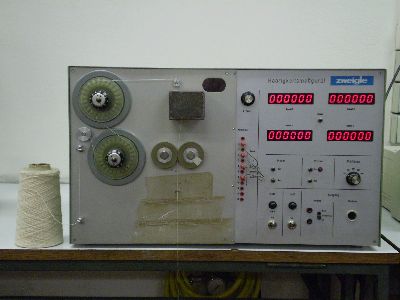|
Name of equipment: |
Yarn hairiness tester |
|
Purpose: |
Hairiness occurs because some fibre ends protrude from the yarn body or fabric, some looped fibres arch out from the yarn core and some wild fibres in the yarn. The main criteria for the definition of yarn hairiness is the number of protruding fibers. The Zweigle G565 hairiness tester is used to determine yarn hairiness in a practical manner. It operates on the photometric principle. |
|
Model, type, country of origin: |
Type G 565, Zweigle,
Germany |
|
Technical characte-ristics: |
Hair lengths to be measured: 1, 2, 3, 4, 6, 8, 10, 12, 15, 18, 21 and 25 mm.
For measurements 4 length ranges are selected. Yarn lengths which are tested: 25, 50, 100, 200 and 400 m. Test speed: 50 m/mm. |
| Year of origin: 1984
Figure:
|
|
|
Method of |
The Zweigle G565 hairiness tester operating on the photometric principle is used to determine yarn hairiness. It counts the number of hairs at certain distances. The hairs are counted simultaneously by a set of photocells. The yarn is illuminated from the opposite side from the photocells. In the illumination only the fibers sticking out of the yarn body are visible, and the yarn body is dark. The received light is converted into an electrical signal. The values are read from the counters upon completion of the determination of hairiness. The instrument calculates the total number of hairs. |
|
Department, |
Department of Textile Design and Management
Laboratory, B-008 Prilaz baruna Filipovića 28a |
| Addition note:
– |
|

